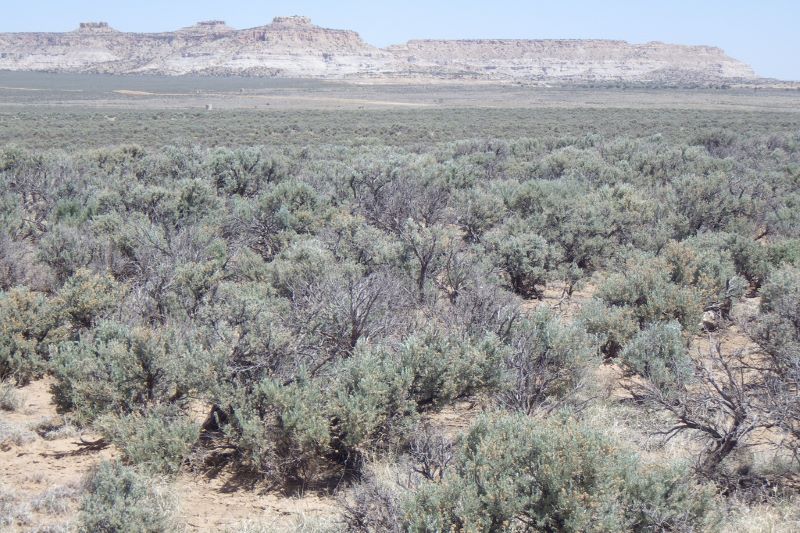ESS2.D Weather and Climate
Below are lesson resources for the Disciplinary Core Idea Weather and Climate.
Looking at Vegetative Growth and Elevation

Grade Level: 3-5
Performance Expectation Connections:
3-LS3-2. Use evidence to support the explanation that observable traits can be influenced by the environment.
3-LS4-3. Construct an argument with evidence that in a particular habitat some organisms can survive well, some survive less well, and some cannot survive at all.
3-ESS2-2. Obtain and combine information to describe climates in different regions of the world.
Science and Engineering Practices: Engaging in Argument From Evidence; Analyzing and Interpreting Data
Crosscutting Concepts: Patterns; Cause and Effect
Disciplinary Core Ideas: Inheritance of Traits; Variation of Traits; Adaptation; Weather and Climate
Possible Guiding Questions: Why is there a treeline? How can certain areas have similar climate but very different vegetation? How have different plants adapted to different elevations? How might climate change impact vegetation patterns on mountains?
Possible Instructional Uses: You may use this phenomenon to explore the relationship between environmental conditions and elevation, life zones, adaptations to different ecosystems, and climate change’s impact on vegetation.
Contributors: Martha Inouye, Clare Gunshanen, Sienna Wessel, Matthew Bisk
Date Uploaded: 11/11/21
Vegetative Communities and Climate Change

Image: Adam Zolyak - licensed under the CC Attribution-NonCommerical-NoDerivs 2.0 Generic license
Grade Level: 9-12
Performance Expectation Connections:
HS-LS2-2. Use mathematical representations to support and revise explanations based on evidence about factors affecting biodiversity and populations in ecosystems of different scales.
HS-LS4-5. Evaluate the evidence supporting claims that changes in environmental conditions may result in: (1) increases in the number of individuals of some species, (2) the emergence of new species over time, and (3) the extinction of other species.
Science and Engineering Practices: Engaging in Argument From Evidence; Analyzing and Interpreting Data; Using Mathematics and Computational Thinking
Crosscutting Concepts: Patterns; Cause and Effect
Disciplinary Core Ideas: Adaptation; Interdependent Relationships in Ecosystems; Ecosystem Dynamics, Functioning, and Resilience; Biodiversity and Humans; Weather and Climate; Global Climate Change
Possible Guiding Questions: Why does treeeline exist on mountains? How does temperature, precipitation, and elevation affect vegetative communities? Why do certain communities of plants grow in certain locations and under certain conditions? How might climate change impact the presence of treeline on mountains? What impacts would a loss of alpine environment have on humans? How might climate change affect the plant communities that we live near?
Possible Instructional Uses: This phenomenon provides an entrance point into discussing how various environmental conditions, such as temperature and precipitation, impact the communities of plants that grow in certain areas. There is also an opportunity to explore how climate change will impact plant communities, including how threats to alpine environments would affect humans.
Contributors: Martha Inouye, Clare Gunshanen, Sienna Wessel, Matthew Bisk
Date Uploaded: 11/11/21
Desert Vegetative Communities

Image: Matt Lavin - licensed under the CC Attribution-ShareAlike 2.0 Generic license.
Grade Level: 3-5
Performance Expectation Connections:
3-ESS2-1. Represent data in tables and graphical displays to describe typical weather conditions expected during a particular season.
3-ESS2-2. Obtain and combine information to describe climates in different regions of the world.
3-LS3-2. Use evidence to support the explanation that observable traits can be influenced by the environment.
3-LS4-3. Construct an argument with evidence that in a particular habitat some organisms can survive well, some survive less well, and some cannot survive at all.
Science and Engineering Practices: Engaging in Argument From Evidence; Analyzing and Interpreting Data; Constructing Explanations and Designing Solutions; Obtaining, Evaluating, and Communicating Information
Crosscutting Concepts: Patterns; Cause and Effect
Disciplinary Core Ideas: Adaptation; Variation of Traits; Weather and Climate
Possible Guiding Questions: How can Wyoming and Australia have similar vegetation despite their distance apart? How do temperature and precipitation impact plant communities? Why do deserts form in certain locations around the globe? What adaptations do plants have for living in dry, desert-like environments?
Possible Instructional Uses: You may use this phenomenon to investigate several different ideas. You may introduce students to ideas of global climatic conditions that impact the distribution of certain habitats. At a smaller scale, you may have students investigate the range of temperature and precipitation that is characteristic of different biomes. There is also an opportunity to explore various plant adaptations to dry, harsh conditions, explaining the distribution and appearance of various types of plants.
Contributors: Martha Inouye, Clare Gunshanen, Sienna Wessel, Matthew Bisk
Date Uploaded: 1/9/2022
Global Patterns of Desert Formation

Image: John Coppi, CSIRO - licensed under the CC Attribution 3.0 Unported license.
Grade Level: 6-8
Performance Expectation Connections:
MS-ESS2-6. Develop and use a model to describe how unequal heating and rotation of the Earth cause patterns of atmospheric and oceanic circulation that determine regional climates.
Science and Engineering Practices: Developing and Using Models
Crosscutting Concepts: Patterns; Systems and System Models
Disciplinary Core Ideas: Weather and Climate
Possible Guiding Questions: How can Wyoming and Australia have similar vegetation despite their distance apart? How do temperature and precipitation impact plant communities? Why do deserts form in certain locations around the globe?
Possible Instructional Uses: You may use this phenomenon to primarily investigate desert communities around the globe and the large, climatic patterns that impact biome formation. This lesson may also serve as a jumping off point for exploring differences in weather in the Northern and Southern Hemipsheres. You may also use this lesson to transition into exploring plant adaptation and genetic population dynamics.
Contributors: Martha Inouye, Clare Gunshanen, Sienna Wessel, Matthew Bisk
Date Uploaded: 1/9/2022
